
Despite the poor weather conditions, domestic accommodation establishments registered nearly 2.7 million guest nights.Continue reading

While May Day is celebrated worldwide as Labor Day, the history of this holiday extends far beyond the labor movement of the 19th century. Its roots are linked to ancient spring festivals that celebrated the rebirth of nature, before acquiring a deeper social and political meaning over time.
The ancient Greeks and Romans paid tribute to their spring goddesses – Chlóris and Flora – with festivities, recalls ujkor.hu. These traditions lived on in the cultures of European peoples and blended with local customs. In Hungary, the tradition of the maypole (Májusfa), a colorfully decorated tree erected as a sign of spring and community, is still alive today.
In the 19th century, May Day took on a new meaning in the wake of industrialization. The demand for an eight-hour day also resonated in the Hungarian labor movement. In 1890, tens of thousands took to the streets of Budapest to demonstrate for better working conditions. The newly founded Hungarian Social Democratic Party played a central role in these early May Day celebrations.
The Hungarian government initially responded to the growing workers’ protests with bans. However, the determination of the movement and the parallel uprisings of the poor peasants on the lowlands forced the authorities to relent. Although subject to strict conditions, May Day celebrations were permitted in Hungary until the outbreak of the First World War.
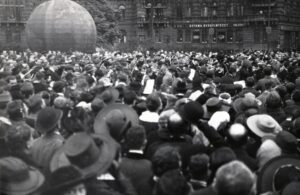
1919 May Day parade at the Kodály Roundabout in Budapest (Photo: Fortepan / Marics Zoltán)
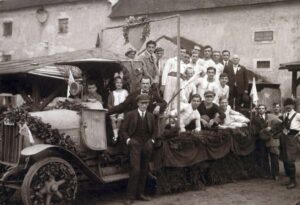
The newly founded soccer team of the workers of the Steiner brick factory in Sopron on May 1, 1920 (Photo: Fortepan / Hajdu András)
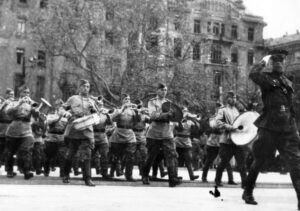
Russian soldiers on Freedom Square in Budapest on May 1, 1945 (Photo: Fortepan / Military Museum of Southern New England)
After the Second World War, May Day finally established itself as a public holiday and non-working day in Hungary, as in most countries of the Eastern Bloc. During this time, the celebrations were often characterized by political parades and demonstrations of power.
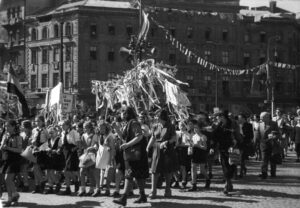
Participants in the May Day celebrations in Budapest in 1946 (Photo: Fortepan / Berkó Pál)
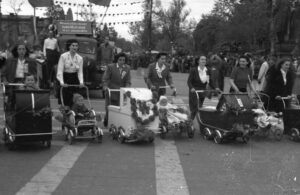
1947 May Day celebrations in Budapest (Photo: Fortepan / Berkó Pál)
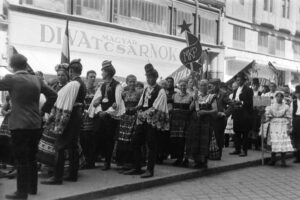
1948 Young people in Matyó costume at the May Day parade in Budapest
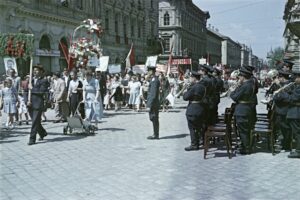
1953 May Day parade in Szeged (Photo: Fortepan / Horváth József)
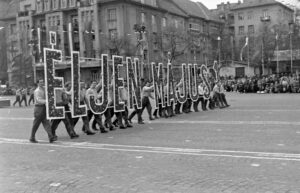
1956 May Day Parade (Photo: Fortepan / Hungarian Police)
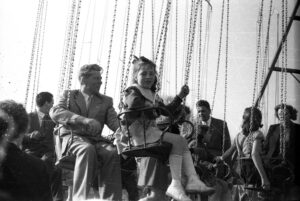
1958 Népliget Park in Budapest (Photo: Fortepan / FSZEK Budapest Collection / Sándor György)
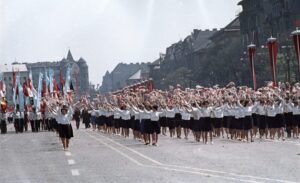
Parade on May 1, 1964 (Photo: Fortepan / Nagy Gyula)

1968 May Day celebrations in Monor (Photo: Fortepan / Péterffy István)
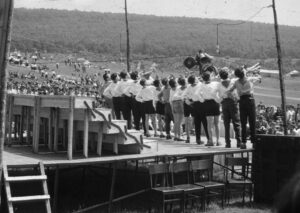
1968 Majális in Budaörs (Photo: Fortepan / A R)
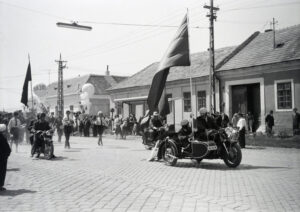
1974 May Day parade in Esztergom (Photo: Fortepan / Almássy László)
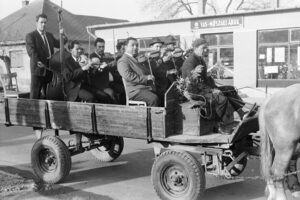
1975 Musicians from Tarcal at a May Day parade (Photo: Fortepan / Leskó Imre)
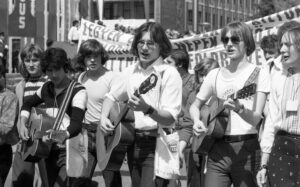
1977 May Day parade in Eger (Photo: Fortepan / Urbán Tamás)
With the end of the socialist regime, the significance of May Day in Hungary also changed. The former political rallies faded into the background and the day developed more and more into a popular festival, a “Majális” – a cheerful spring festival with picnics, music, and social get-togethers.
Even though the original demands of the labor movement – such as the eight-hour day – have long since become reality in Hungary, May Day remains an important public holiday. It commemorates the struggles for social justice and better working conditions, but today it is above all a welcome occasion to enjoy spring and celebrate the community.
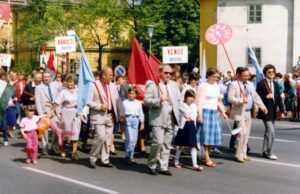
1987 May Day celebrations in Tata (Photo: Fortepan / Fortepan/Album033)
The tradition of the maypole lives on, as do the convivial “Majális” events throughout the country, which reflect the spirit of new beginnings and the joy of life. In this way, May Day in Hungary uniquely combines historical roots with modern festivities.
via ujkor.hu, Featured photo: Fortepan / Urbán Tamás